This paper is available for the academic year 2024-25
The Body paper is comparative in terms of both language areas and media covered: literature, non-literary texts, film, performance, art. It aims to explore, by way of diverse theoretical and interpretative approaches, the way in which bodies and embodiment are presented in these diverse media and the stakes or wider implications of this presentation.
Material discussed in lectures and seminars mostly comes from the 19th to 21st centuries, but students are free to explore material from any period in their supervision and assessment work. Students should be aware there is no set syllabus of texts for the paper; they are free to work on material discussed on lectures and seminars and/or on their own appropriate choices. Students should also be aware that although different literary and cultural theories will be discussed, these are frameworks within which students explore materials - this is not a 'theory course' per se.
Pedagogically, this is an exciting course for students, where you take control of your learning in ways that are unparalleled in the MML Tripos. By choosing your materials of study and how to combine them across languages, perhaps inspired by the lectures and seminars, you create a paper that is distinctive to your passions and interests. CS5 students therefore feel an enormous amount of connection and pride in the work they produce.
Students must be able to work in three languages (one of which can be English, or another language in English translation). This also applies to optional dissertations. Students on the History and Modern Languages Tripos or English Tripos taking this paper will need to show knowledge of three language areas, one relating to a chosen Tripos language. For HML and English students, the other two languages may either be foreign languages, both engaged with through translation, or English and one other language engaged with through translation.
The Topics, with example areas of enquiry, are:
The Queer Body - non-heteronormative sexualities; the trans* body
The (Un)Clothed Body - nudity and nakedness; the role of clothing, costume and drag
The Body and Contagion - the role of affect; discourses and narratives of plague, illness and pain
The Body and Trauma - violence and power structures; representation of individual trauma - physical and psychical
Bodies, Race and Identity - mobility, communities and legacies of slavery/oppression; biopolitics and structures of power
The Dis/En-abled Body - ableism and physical difference; cyborgs and prosthetics
- Judith Butler, Bodies that Matter 1993
- Michel Foucault, History of Sexuality: an Introduction, 1990 (1976)
- Sean Sweeney and Ian Hodder (eds) The Body 2002
- Elaine Scarry, The Body in Pain, 1985
- Susan Suleiman (ed.), The Female Body in Western Culture, 1986
The provision of teaching for The Body consists of:
- 9 lectures, Mon 10, divided between the Michaelmas and Lent Terms
- 12 seminars, Weds 4-5, in the Michaelmas and Lent Terms (2 seminars for each of the topics). In the first of each set of seminars, either one topic convenor or both will present a paper relating to the topic. In the second seminar of each set, short papers will be given by students, relating to material in the language areas in which they specialize. All students will be expected to give at least one presentation during the year. In each case, the lecture will precede the seminars. Supervision will be arranged by the convenors of the modules, and students can expect to have 6-8 supervisions in the course of the year.
There will be three introductory lectures, followed by the six topics. Each topic will be taught in line with the model explained above, with 1 lecture and 2 seminars per topic. Students are expected to organise 6-8 supervisions during the year, ranging across their chosen topics.
Examination and Coursework essay submitted after the Easter vacation.
Optional Dissertation.
Dr Stuart Davis |


